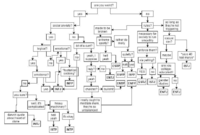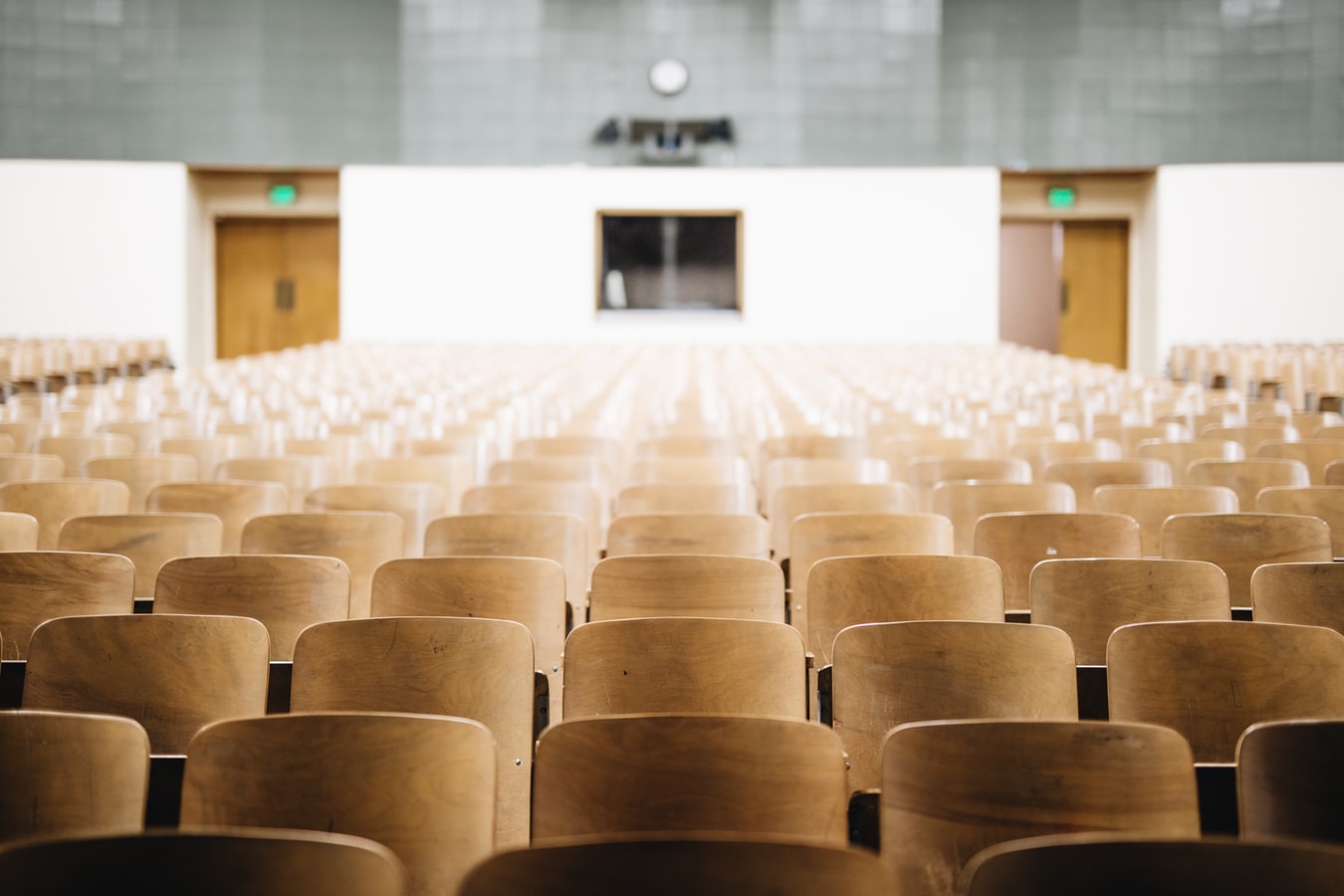Гледам многумина од вас пак сте правеле тестови... Лоши деца, мнooогу лоши деца...
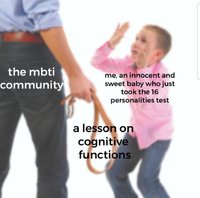
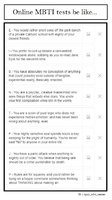
 Cognitive Functions 101:
The 8 Myers-Briggs Cognitive Functions Can Help You Understand Your Personality on a Whole Other Level
Cognitive Functions 101:
The 8 Myers-Briggs Cognitive Functions Can Help You Understand Your Personality on a Whole Other Level
When most people hear "Myers-Briggs,"
they think of the personality test, and the four letters associated with their resulting personality type: introverted (I) or extroverted (E), intuitive (N) or sensing (S), thinking (T) or feeling (F), and judging (J) or perceiving (P). But these traits only tell part of the story. Did you know you also have four key MBTI functions that correspond to your type?
Psychologist Carl Jung (essentially the father of typology) talked
a lot about the cognitive functions, which Katherine Cook Briggs and Isabel Briggs Myers then utilized to create the MBTI system we use today. These eight functions are critical to understanding how you operate in the world, and are worth knowing as a tool to help you delve deeper into how you and anyone else ticks. Using descriptions of the MBTI cognitive functions is also how I’ve learned to get a sense of people in real life, without them needing to take the personality test first.
These eight functions are critical to understanding how you operate in the world, and are worth knowing as a tool to help you delve deeper into how you and anyone else ticks.
The 8 MBTI cognitive functions
1. Extroverted Sensing (Se)
Extroverted sensing is using taste, touch, smell, sound, movement and sight to easily absorb information in the physical world. As strongly observant, these people pick up on details other people do not notice, and some even have a photographic memory. They love excitement, spontaneity, new experiences, and material goods.
Dominant extroverted sensors are ESTPs and ESFPs. Those who also have a strong affiliation for this function are ISTPs and ISFPs.
2. Introverted Sensing (Si)
Introverted sensing is understanding the world through past precedent and experience. People who are introverted sensors thrive using routine, tradition, organization, and rules. They are often very attuned to their bodies, and have specific ways of doing things that work for them in order to get the job done. They are responsible, reliable, and cautious.
Dominant introverted sensors are ISTJs and ISFJs. Those who also have a strong affiliation for this function are ESTJs and ESFJs.
3. Extroverted Thinking (Te)
Extroverted thinking is outwardly conveying thoughts using logic, reason, and analysis. Extroverted thinkers are clear and concise, direct, and unmoved by emotional appeals. They are often strong orators and writers, who have thoughtful, well-researched arguments and theories. Extroverted thinkers like to convince people of their thoughts and implement new ideas.
Dominant extroverted thinkers are ENTJs and ESTJs. Those who also have a strong affiliation for this function are INTJs and ISTJs.
4. Introverted Thinking (Ti)
Introverted thinking is a function that seeks to understand personal ideas using a deeply specified framework. Introverted thinkers are constantly mining their own thoughts in an attempt to be rational and reasonable, slowly ruling out other ideas before coming to their own firm conclusions (and they're often guarded about how they got to these conclusions).
Dominant introverted thinkers are INTPs and ISTPs. Those who also have a strong affiliation for the function are ENTPs and ESTPs.
5. Extroverted Intuition (Ne)
Extroverted intuition often means noticing patterns, symbols, and connections in the world that others may not see. Extroverted intuitives live for possibility, often expressing themselves through a tumble of ideas, or a constant external brainstorm. They may talk about many things they want to do, but not ultimately follow through. For them, it’s all part of the process to get to the
best idea.
Dominant extroverted intuitives are ENTPs and ENFPs. Those who also have a strong affiliation for the function are INFPs and INTPs.
6. Introverted Intuition (Ni)
I once heard introverted intuition described as “knowing without knowing how,” as well as “thinking without thinking.” It’s the most mystical of all the MBTI functions. People with this function tend to reach conclusions without having a clear idea as to how they got there. They are wise, convicted, and always have a plan to work toward a bigger picture and seek to build and understand complex systems. Introverted intuitives are always processing in the background, and regularly have “a-ha!” realizations when answers simply come out of nowhere.
Dominant introverted intuitives are INTJs and INFJs. Those who also have a strong affiliation for this function are ENFJs and ENTJs.
7. Extroverted Feeling (Fe)
Extroverted feeling is concerned with harmony, bringing people together, and caring. Extroverted feelers are great at reading the emotions of others; they are big empathizers, absorbing the feelings of others around them to the point that they sometimes cannot tell which feelings are their own. They easily squash and step around conflicts, and they are typically very social.
Dominant extroverted feelers are ENFJs and ESFJs. Those who also have a strong affiliation for the function are INFJs and ISFJs.
8. Introverted Feeling (Fi)
Introverted feeling is a function concerned with authenticity, individualism and values. Introverted feelers know what they believe, have a strong sense of self, and can easily identify their personal experience of emotion. They are often outspoken activists, and love to help those in need. They don’t have stronger feelings than others who utilize this function, but they do have more mastery over them and can put them toward change—of self, of others, of society.
Dominant introverted feelers are INFPs and ISFPs. Those who also have a strong affiliation for the function are ENFPs and ESFPs.
Understanding the MBTI functions as the 16 types
Now that we're clear about the eight MBTI functions, we can better understand how they correspond to each of the 16 Myers-Briggs personality types. Each type has four functions, ordered in a stack from strongest to weakest.
Dominant function
The first function in the stack is called the dominant function, the strongest one you use so often, you may not even realize you are doing it.
Auxiliary function
The second function is called the auxiliary function, which assists the dominant function in conveying ideas and is also relatively strong in your personality.
Tertiary function
The third function is the tertiary function, which may be slightly under-developed, but does start to manifest in your type more prominently as you age.
Inferior function
The fourth function is your inferior function, which is challenging to access and often only comes out under stress.
Let’s look at the types and their functions. Here are the magic codes:
INTJ: Ni > Te > Fi > Se
INFJ: Ni > Fe > Ti > Se
ENTJ: Te > Ni > Se > Fi
ENFJ: Fe > Ni > Se > Ti
ENTP: Ne > Ti > Fe > Si
INTP: Ti > Ne > Si > Fe
INFP: Fi > Ne > Si > Te
ENFP: Ne > Fi > Te > Si
ESTP: Se > Ti > Fe > Ni
ESFP: Se > Fi > Te > Ni
ISTP: Ti > Se > Ni > Fe
ISFP: Fi > Se > Ni > Te
ISFJ: Si > Fe > Ti > Ne
ESFJ: Fe > Si > Ne > Ti
ESTJ: Te > Si > Ne > Fi
ISTJ: Si > Te > Fi > Ne
To take a closer look, let’s break down what this means for just one of the types. Say we’re analyzing the ENFJ’s personality. To do this, we consider the four cognitive functions that correspond to the respective personality type in order to get a deeper understanding.
ENFJ: Fe > Ni > Se > Ti
ENFJ is warm, empathetic and inviting, able to make friends with just about anyone. That's unsurprising given it’s the characteristic element of their personality (dominant Fe). But they are also wise, highly planed, and constantly working toward a higher goal (auxiliary Ni). They are also usually comfortable in the physical world, probably enjoy working out and traveling, and value being seen as a stylish and trendy person (Se). That said, they may not be inclined to truly break outside their comfort zone with extreme sports or dangerous destinations.
The ENFJ’s inferior function (Ti) may only be noticed when they are under stress or in the problems they deal with often, especially considering the inferior function is often the opposite of the dominant function. ENFJ is adept at processing others’ emotions and creating harmony in social settings; they may struggle to analyze their own thoughts in a rational way, and tend to be overthinkers.
3 ways to use MBTI functions IRL
There are many observations about cognitive functions worth noting that may be useful to you as you go about your life. Below, find three of them.
1. Assigning Types to others
A lot of people are interested in assigning types to friends, family, celebrities, kids, bosses IRL—and I'm one of them. When I do this for people who have not taken the
MBTI test, well, the functions spell out the exact characteristics I look for. (Remember, extroverted functions are the easiest to spot, so don’t jump to conclusions about a type before you have time to get a sense of them).
2. Rethinking E versus I
While we’re on the subject, let’s also talk about introverts and extroverts, terms that have less to do with how social you are, and more to do with the orientation of your dominant cognitive function.
ENFPs and ENTPs often feel like introverts but process the world through extroverted intuition (Ne), which means outwardly focusing toward their physical reality, making them dominant extroverts.
For instance, ENFPs and ENTPs are often solitary for long periods and are deep thinkers. They often feel like introverts, but the way they process the world—through extroverted intuition (Ne), noticing patterns in the universe, seeing what could be—is
outwardly focused toward their physical reality instead of toward their internal experience, making them dominant extroverts.
3. Using inferior functions
Inferior functions are often displayed in our vices or behaviors under stress. For instance, an INFJ or an INTJ may lean into excess and materialism (the inferior Se). An INFP or ISFP might lash out with verbal criticisms or order people around (inferior Te), even though they are normally “live and let live” types. Learning to engage with your inferior function in a healthy way is a lifelong pursuit.
Ultimately, cognitive functions act as secret MBTI codes that can help you understand yourself and others in deeper, more interesting ways. Now that you know all about ‘em, too, it's likely you won't be able to help but start noticing them action.
Want other Myers-Briggs intel? Here's how to get out of your comfort zone and how you prefer to relax, according to your type.
In a previous post we established that understanding your Meyers-Briggs (MBTI) type is really all about understanding your cognitive functions , the next step is to understand what the cognitive functions are, how they work, and how you can leverage them to get where you’re going. […]

boldintrovert.com
I was browsing articles online recently and tripped across an oft-memed quotation attributed to Albert Einstein that says, “If you can’t explain something simply, you don’t understand it well enough.” Or some variation thereof. Considering his work delved into some of the most complex and mind-bendi

boldintrovert.com
And also, how to appeal to each type and potentially open their mind.

www.wellandgood.com
Source:
https://www.wellandgood.com/what-are-mbti-functions/

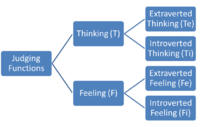
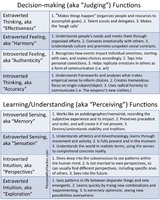

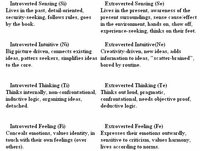


oops wrong meme

I just want to point out that Јung was the least prescriptive. He limits his personality types to being characterized by one dominant function and one auxiliary. He then goes on to describe how people that are strongly unbalanced in any of the functions tend to behave. He proposes that most people tend to be balanced individuals, but that everyone tends to one dominant function, and that sometimes hints of a secondary function that is opposite in nature can be observed. His entire theory is based on observation. The creation of 16 types and the prescription of their distinct behaviour and functions was all patched on top of this by other people. Jung merely created the functions to sort strongly unbalanced behaviour to poles. In his view, in healthy individuals the dominant function is inconspicuous. And I like that. Grow up and stop being edgy.
^Коментар од реддит за Јungtheory-deniers. Теоријава е само дескриптивна, не прескриптивна или предиктивна. Теоријава може да само да ви открие преференциите во I/O (input/output) и како тоа се одразува на вашиот поширок психолошки профил и не е алфа и омега на вашата личност. Тестовите се невалидни. Престанете со тестовите. Но доколку не можете да издржите нетестирани, еве ви еден флоу чарт, 100% подобро од тест гарантирано:
